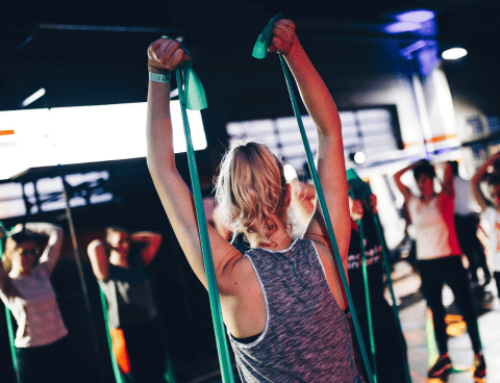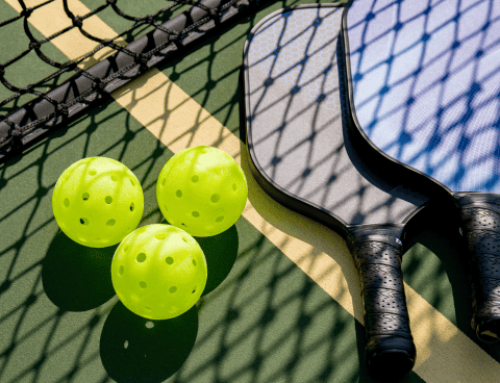When to Use Isolation Exercises for Growth
Isolation exercises are often shunned by coaches and trainers, and for good reason. Multi-joint lifts not only transfer better to the field and real-world environments, they are also more metabolically demanding, recruit greater amounts of muscle, and signal greater overall increases in strength and size.
Too often, new trainees target specific muscle groups with isolation movements (like Bicep Curls) when they could do something more productive with their time (like Bent-Over Rows or Pull-Ups). However, isolation exercises are not without benefits in specific situations, such as high frequency routines for those focused on aesthetics. Below is my three-step checklist to determine whether you should use isolation exercises for growth.
Do you lift at least four times per week?
If you train three or fewer days per week, you should probably stick with multi-joint exercises. Regardless of your goals, they offer more value per time spent in the gym and signal greater physiological adaptations than isolation movements. Even if your goal is aesthetics, multi-joint exercises recruit more total musculature and lead to greater overall adaptations in strength, size and metabolic response. But if you train four or more times per week, there may be room in your program for isolation exercises.
Are your workouts longer than 30 minutes?
Per the same rationale as above, even if you train more frequently, multi-joint movements offer better return on your time.
But if your training sessions move beyond the half-hour mark, you might benefit from downgrading to smaller movements and target specific areas at a time. You can focus more on overload and stress, hitting what we sometimes call “true failure” at the target muscle by taking other muscle groups out of play. But again, be sure to prioritize multi-joint exercises in your routine. Use isolation exercises to either correct imbalances and deficiencies or “polish off” specific muscle groups that may be lagging in development.
Is aesthetics a goal, and if so, are you relatively lean?
At this point, you have determined that you lift four or more days per week for more than 30 minutes at a time, and aesthetics are at least a secondary goal of your program. If this is the case, all the muscle in the world won’t matter if your body fat covers it up. I’ve heard it mentioned (anecdotally) that a high body-fat percentage may hinder muscle-building processes, such as protein synthesis and glycogen supercompensation, by way of insulin resistance. So until you are relatively lean, favor more metabolically demanding multi-joint exercises. They burn more calories per unit of time compared to easier, isolation alternatives.
If you’re ready for isolation exercises, try this bicep workout.
If you answered “yes” to all of the above, go for isolation exercises—so long as they don’t undermine or replace multi-joint lifts prescribed by your coaches.
Advanced reasoning for isolation exercises
- Many times after or during rehab from an injury, we have to separate links in the kinetic chain to avoid hindering rehab protocols, or to target a specific area in a specific manner. This, obviously, is a question for your athletic trainer or physical therapist, but it is important to note that there are circumstances that would lead to continued isolation work after recovery. Stabilizing muscles of the shoulder, for example, are often isolated during corrective work so that the larger prime movers don’t take over the exercise.
- We also see advanced programming that sometimes combines isolation and compound movements to hit true failure at a specific target muscle or group. In advanced trainees, we see an increased need for additional stimuli to elicit adaptations, especially muscle growth or strength. For this reason, isolations may be valuable tools for advanced lifters who have already adapted to years of resistance training.
- Sticking points and limitations can sometimes call for properly programmed isolation movements. The muscles of the upper back, for example, are notorious for holding athletes back during the Deadlift. The thoracic spine is often a weak point during Back Squats. Hip flexor strength and extensibility in those who sit for long periods, external rotators of the humerus in athletes who throw or pitch, and even dorsiflexion and hip flexion in sprinting athletes can all become weak links over time in more “basic” programs of compound-only lifts.
RECOMMENDED FOR YOU
MOST POPULAR
When to Use Isolation Exercises for Growth
Isolation exercises are often shunned by coaches and trainers, and for good reason. Multi-joint lifts not only transfer better to the field and real-world environments, they are also more metabolically demanding, recruit greater amounts of muscle, and signal greater overall increases in strength and size.
Too often, new trainees target specific muscle groups with isolation movements (like Bicep Curls) when they could do something more productive with their time (like Bent-Over Rows or Pull-Ups). However, isolation exercises are not without benefits in specific situations, such as high frequency routines for those focused on aesthetics. Below is my three-step checklist to determine whether you should use isolation exercises for growth.
Do you lift at least four times per week?
If you train three or fewer days per week, you should probably stick with multi-joint exercises. Regardless of your goals, they offer more value per time spent in the gym and signal greater physiological adaptations than isolation movements. Even if your goal is aesthetics, multi-joint exercises recruit more total musculature and lead to greater overall adaptations in strength, size and metabolic response. But if you train four or more times per week, there may be room in your program for isolation exercises.
Are your workouts longer than 30 minutes?
Per the same rationale as above, even if you train more frequently, multi-joint movements offer better return on your time.
But if your training sessions move beyond the half-hour mark, you might benefit from downgrading to smaller movements and target specific areas at a time. You can focus more on overload and stress, hitting what we sometimes call “true failure” at the target muscle by taking other muscle groups out of play. But again, be sure to prioritize multi-joint exercises in your routine. Use isolation exercises to either correct imbalances and deficiencies or “polish off” specific muscle groups that may be lagging in development.
Is aesthetics a goal, and if so, are you relatively lean?
At this point, you have determined that you lift four or more days per week for more than 30 minutes at a time, and aesthetics are at least a secondary goal of your program. If this is the case, all the muscle in the world won’t matter if your body fat covers it up. I’ve heard it mentioned (anecdotally) that a high body-fat percentage may hinder muscle-building processes, such as protein synthesis and glycogen supercompensation, by way of insulin resistance. So until you are relatively lean, favor more metabolically demanding multi-joint exercises. They burn more calories per unit of time compared to easier, isolation alternatives.
If you’re ready for isolation exercises, try this bicep workout.
If you answered “yes” to all of the above, go for isolation exercises—so long as they don’t undermine or replace multi-joint lifts prescribed by your coaches.
Advanced reasoning for isolation exercises
- Many times after or during rehab from an injury, we have to separate links in the kinetic chain to avoid hindering rehab protocols, or to target a specific area in a specific manner. This, obviously, is a question for your athletic trainer or physical therapist, but it is important to note that there are circumstances that would lead to continued isolation work after recovery. Stabilizing muscles of the shoulder, for example, are often isolated during corrective work so that the larger prime movers don’t take over the exercise.
- We also see advanced programming that sometimes combines isolation and compound movements to hit true failure at a specific target muscle or group. In advanced trainees, we see an increased need for additional stimuli to elicit adaptations, especially muscle growth or strength. For this reason, isolations may be valuable tools for advanced lifters who have already adapted to years of resistance training.
- Sticking points and limitations can sometimes call for properly programmed isolation movements. The muscles of the upper back, for example, are notorious for holding athletes back during the Deadlift. The thoracic spine is often a weak point during Back Squats. Hip flexor strength and extensibility in those who sit for long periods, external rotators of the humerus in athletes who throw or pitch, and even dorsiflexion and hip flexion in sprinting athletes can all become weak links over time in more “basic” programs of compound-only lifts.











